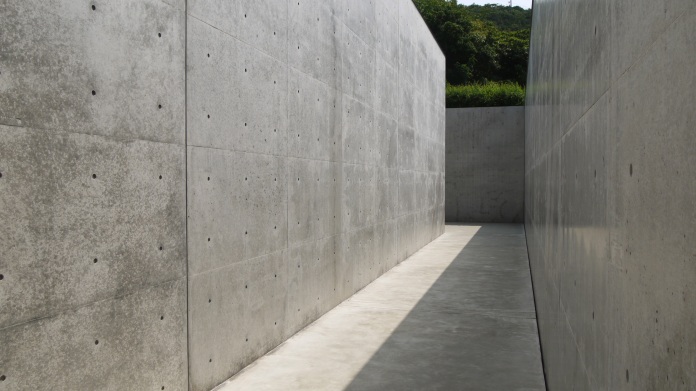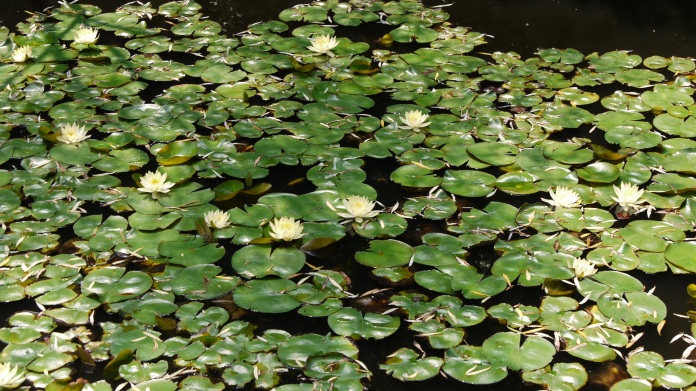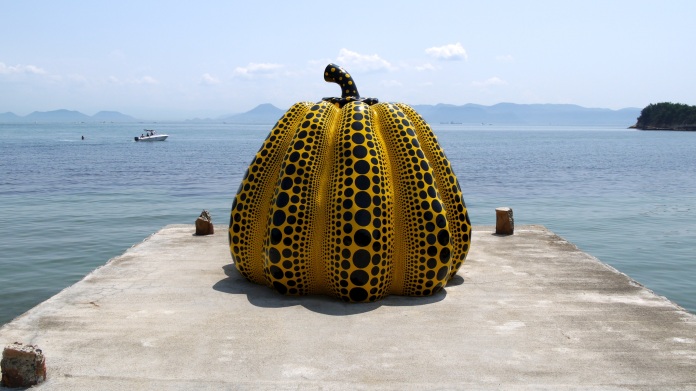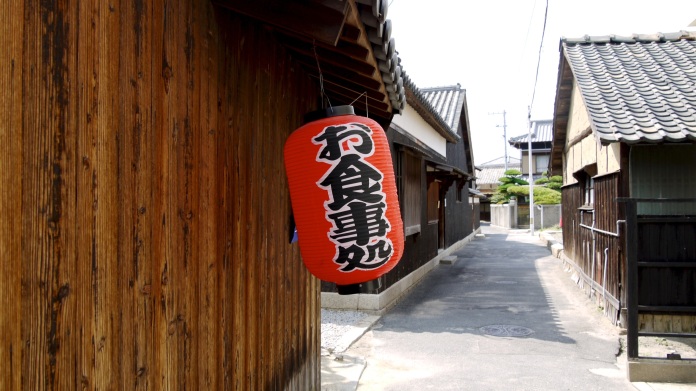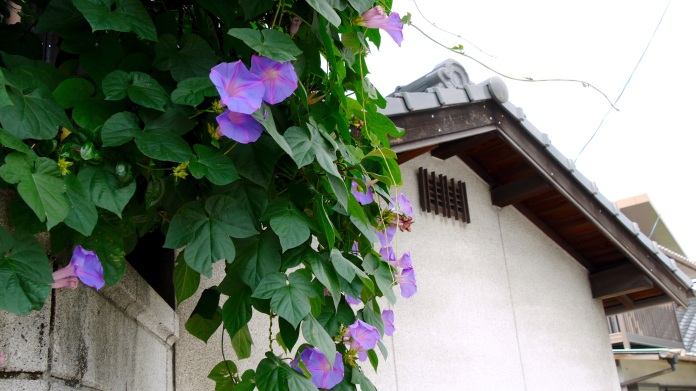Having spent a day in hot and heavy Takamatsu, it was with great excitement that I boarded the high speed ferry to make good my escape to the first of the Setouchi islands I planned to visit, Naoshima. Naoshima is the biggest of the group of remote islands collectively known as the Benesse Art Site. With a name derived from the Latin for wellbeing, I had high hopes of a refreshing and life-affirming artistic experience over the next two days; having tackled, survived and enjoyed nearly a whole year in Japan, I felt this was the perfect way to take a moment to slow down and reflect amongst the beautiful sites and artworks of the Inland Sea before heading home for the summer.
As a somewhat highly strung traveller, I had anticipated that in order to actually relax and enjoy this island-hopping ‘adventure’, I needed to know exactly when the museums opened, the ferries departed and the buses ran; I didn’t take any comfort in the idea of getting stranded alone and hotel-less on Naoshima, no matter how romantic the surroundings. Thankfully, the transport aspect of my visit went exactly to plan; like the rest of Japan, Naoshima has a reliable and punctual (but slightly more cosy) transport network.
Arriving at Naoshima port, visitors are greeted by a bright crimson, ladybird-spotted pumpkin, squatting on the end of a big pier. This surreal creation was spawned by the equally surreal mind of Japanese artist Kusama Yayoi, and it has a bright yellow twin on the other side of the island. Although these gourdy sentinels don’t have big, cutesy eyes, they have taken on the aspect of mascots who, in Japan, can always be relied upon to welcome visitors to a new town.
I had reserved my entry to the Chichu Art Museum online (over-anxious traveller mode) and therefore sailed off the bus and into the museum while hoards of visitors queued up in the already unforgiving sunshine to buy tickets. The Chichu Art Museum, as its name ‘Chichu’ (地 ‘chi’ – earth, 中 ‘chu’ – inside) implies, is built underground, however, this underground design, created by Tadao Ando, is anything but subterranean. The sunshine, which outside felt punishing, was transformed into an ethereal light as it poured into the soft white interiors of the exhibition rooms through ceiling-lights at ground level.
This light was the single greatest feature of the museum for me; Monet’s waterlilies have never been better experienced than in a room bathed in diffuse natural light. This visual experience is augmented by the tactility of the exhibition space. Before entering the waterlilies’ gallery, visitors first slip into some cream slippers and then step into a marble-tiled vestibule; made up of tens-of-thousands of two-centimetre-square cubes of Carrara marble, the floor is a work of art in its own right and flows throughout the gallery and up to the paintings. The gentle differentiation in tones of cream and grey is complimented by the subtle changes in texture felt underfoot as you walk through the exhibition. For me, it was an aesthetic paradise and the memory of the paintings and their setting is an image of real beauty.
The exteriors of the museums on Naoshima, although often very understated, can be as remarkable as the interiors. While waiting for my allotted entry to the Chichu Museum, a helpful guide suggested I visit the nearby Lee Ufan Museum. Nestled into a hillside facing the sea, this museum is invisible as you approach it along a road sloping down to the coast. A flight of concrete steps with a supporting wall featuring the museum’s name in metallic font opens up to the right of the road, and suddenly the museum is very exactly and neatly laid out before you. Although I can’t claim to fully appreciate the minimalistic aesthetic of Lee Ufan’s work, the composition of the museum, and the unfailing attention to detail in its design were beautiful. I’ve never considered concrete an attractive material, in the UK I associate it with failing 1960’s architecture and new town concrete cancer, however in the Naoshima museums it is a sleek and delicately textured material that is at once forceful and quiet.
After spending a peaceful morning wandering the pristine museum interiors, I took a bus to the other side of the island and enjoyed the more organic, outdoor exhibitions littered around the landscape. I stopped for lunch at a lively beach presided over by the ladybird pumpkin’s twin; the beach was crowded with barbecue parties and swimmers. I made camp for one, away from the holiday-weekend revellers, and enjoyed a just-vended, lukewarm chuhi (something like mildly alcoholic lemonade) as I watched a fluctuating line of visitors queue up to have their photo taken with Kusama’s yellow pumpkin. There was something portly and regal about the gourd as it accepted its line of visitors from the end of the pier that was its throne…at least musing from my perch on the beach with chuhi in hand, thats how it seemed.
A few stops further along the bus route, I visited Honmura, a village which hosts the intriguingly entitled ‘Art House Project’. Various houses and temples around the village have been converted into art installations, which can be visited with a pass purchased from the wonderfully air-conditioned local visitor centre. Each installation represents an artist’s interpretation of, or interaction with, the village’s rural architecture; I was never sure what to expect as I approached each house, and the contents ranged from modest, in the form of the skilful and careful restoration of historical furnishings, to bold, where a replica of the Statue of Liberty burst angrily through the floors of a two-storied house.
At one site, thick glass steps, like blocks of ice, formed the approach to a Shinto shrine which sat atop a mountain on the edge of the village. Having become used to the common sight of Shinto shrines throughout Japan, this unusual meeting of materials reminded me of the real significance of these shrines as liminal, magical places where the mundane world meets the spiritual. While some of the installations made me feel uncomfortable and others were simply beautiful, they all created a strong impression on the body and mind, and in the midsummer heat, it was a satisfying but exhausting experience.
As per my schedule, I arrived back in Takamatsu in time for dinner. Having exhausted my appetite for (organised) adventure that day, I found a bar with a distinctly Western menu and devoured a tiny pizza with a smattering of tabasco sauce (a great Japanese intervention in Western cuisine – try it). As I ate I noticed a series of Lego world monuments lined up along the bar, including several of London’s more famous sights; as it turned out, the owner had lived in London for a few years, and after a day of weird and wonderful encounters with art, I enjoyed a chat about the more familiar locales of home.




